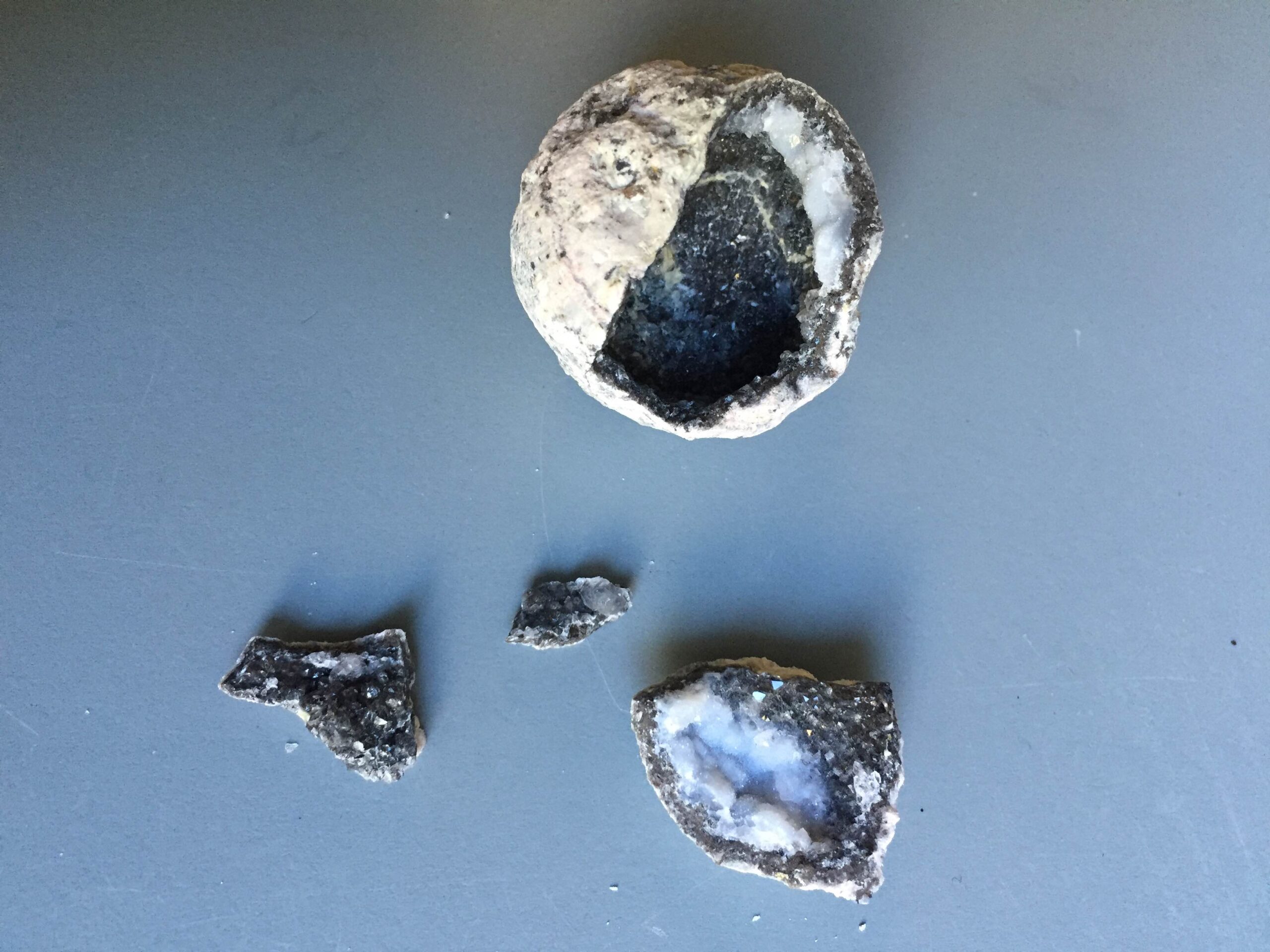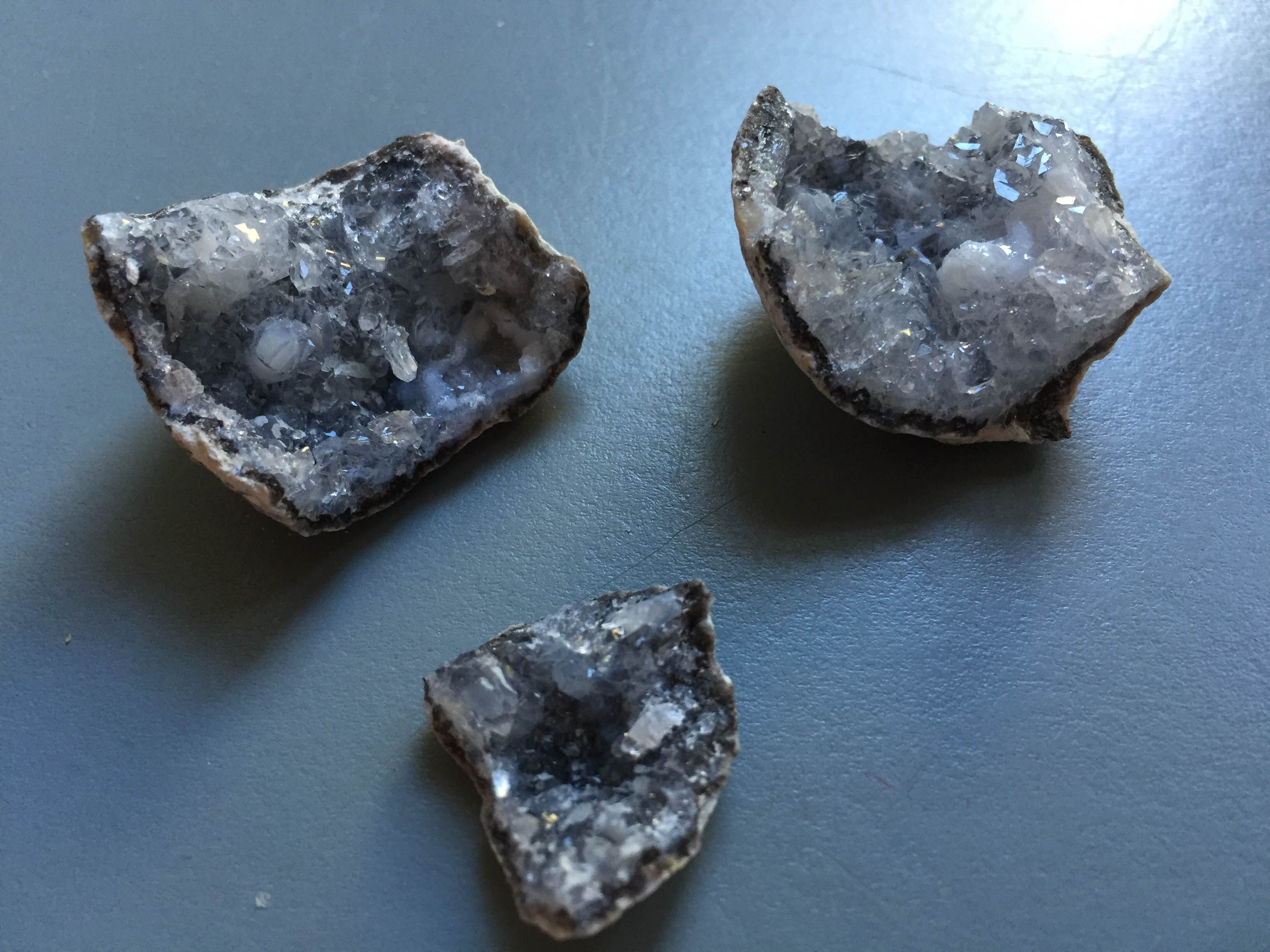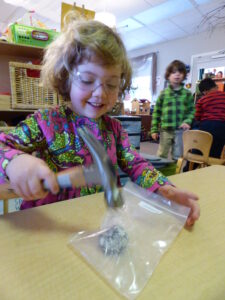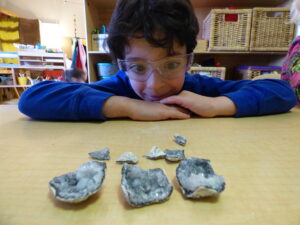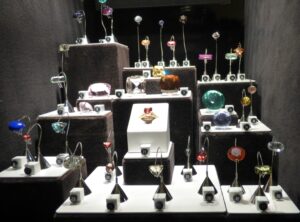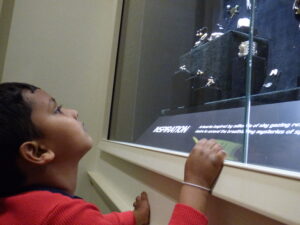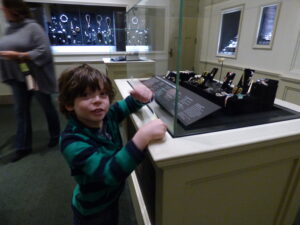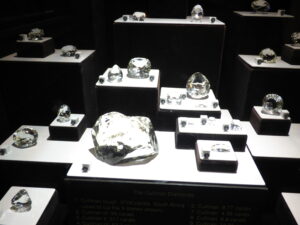One of the questions that we’ve been working on answering is “where do rocks come from?”. At the museum, we learned that some rocks come from volcanoes but the students weren’t completely sure what that meant, so we decided to do some more research. After looking at some books about volcanoes, we learned that when lava comes out of a volcano and hardens, it becomes an Igneous rock. We also learned that depending on how fast or slow the lava cools, it can become different types of Igneous rock. Sometimes when the lava is leaving the volcano, small to large gas bubbles get caught in the molten rock. When the lava hardens, the hollow interior can often get filled with mineral rich fluids which allows crystals to grow. This is what we call a geode.
This week, during center time, the students have been putting on their geologist hats (or more accurately geologist goggles) to see what a geode really looks like before, during, and after they are opened. We spent some time learning about how to be safe with our materials, as the children would be using a real hammer. The children started by using very gentle taps on their rock just as the instructions had detailed. After several attempts, we decided to use a little bit more force. After some trial and error, we found just the right amount of pressure that was needed to split the geodes open revealing different types and patterns of crystals. Some were white and swirly, while others were clear and hexagonal. We even saw some that were black and gray. The students then worked together to try and decide what type of crystals were inside their geodes by comparing them to the pictures in our guide. The students decided that some were very common crystals and others were very rare. We very excited to see what the last few geodes hold inside.

